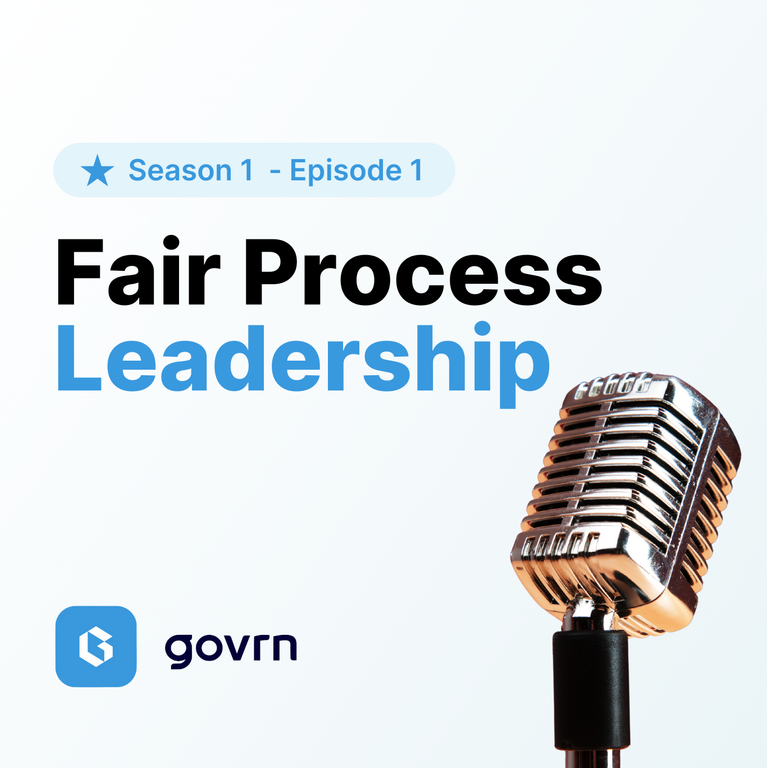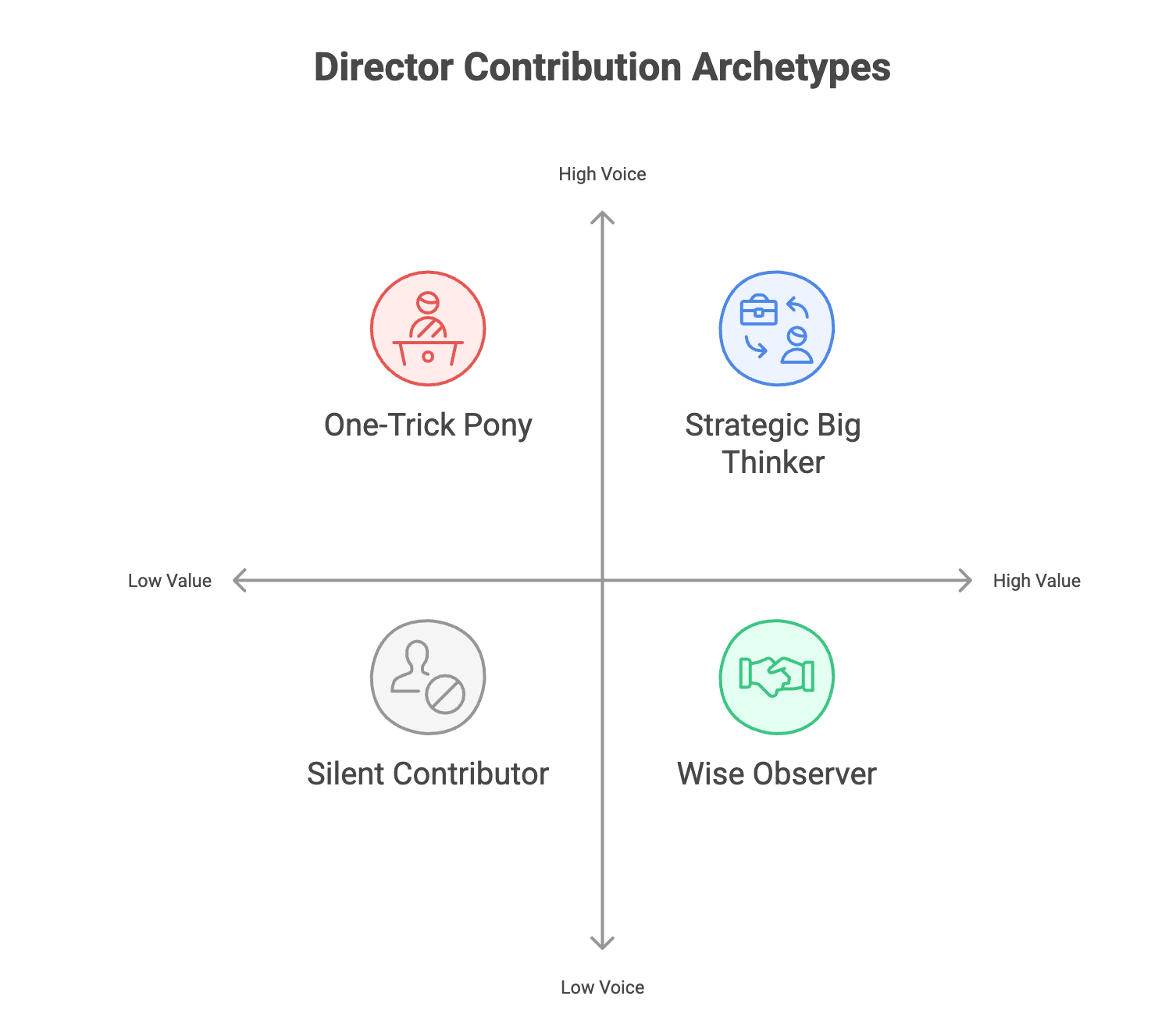
Beyond Structure: Building a High-Performance Board Culture
Discover why board culture matters more than structure and how Fair Process Leadership can transform governance effectiveness.
Ludovic Laffineur
CTO at Govrn
In today’s complex business landscape, the debate over board effectiveness has shifted from a sole focus on structural design to an appreciation of the human and behavioral dimensions. While robust governance structures are essential, a board’s true strength lies in its culture—how its members interact, challenge assumptions, and work together to drive long-term success.
Why Board Culture Matters More Than Structure
Many organizations believe that an effective board is built solely on a well-defined structure. However, research—from studies on fair process in family businesses to case discussions on high-profile boardroom decisions—shows that people and behaviors drive board success. As governance thought leaders argue, it is not the structure itself but the quality of interactions, trust, and collaborative decision-making that create real value.
The Key Drivers of Board Effectiveness
A high-performance board culture is built on several foundational elements:
-
Competent Directors: Directors must bring deep industry knowledge, strategic acumen, and governance expertise. This means not only possessing technical skills but also being able to engage in robust debate and challenge assumptions constructively.
-
Character & Integrity: Ethical leadership and unwavering integrity set the tone for board behavior. Directors with strong character foster trust, which is critical when tough decisions need to be made.
-
Chemistry & Collaboration: Beyond individual credentials, effective boards thrive on diversity of thought and the willingness to engage in open dialogue. The interplay of various perspectives often leads to more innovative strategies and a resilient organization.
Real-world examples, such as the boardroom transformation at Danone during its leadership transition, highlight that when directors with varied strengths align under a common culture, the organization is better prepared to navigate change.
Implementing Fair Process Leadership (FPL)
While the traditional focus has been on achieving a balance between independence and expertise, Fair Process Leadership (FPL) offers a more nuanced approach. FPL emphasizes the importance of engaging all board members in a fair, transparent process to build commitment and drive better decision-making. Rather than a top-down directive, FPL creates a culture where every voice is heard and every decision is explained thoroughly.
Five Key Elements of FPL
-
Engagement: Actively involve all relevant stakeholders—board members, executives, and even external advisors—in framing issues and crafting solutions. Engaged directors are more committed and better prepared to implement decisions.
-
Generation: Encourage the creation of multiple strategic options before deciding on a course of action. This stage benefits from diverse perspectives and leverages the board’s collective wisdom.
-
Decision-Making: Clearly articulate the rationale behind decisions. Transparency in how choices are made fosters understanding and mitigates future conflict.
-
Execution: Commit to decisions with a clear plan for follow-through. Boards that maintain process discipline are better able to adjust when new information emerges.
-
Evaluation: Continuously assess outcomes and learn from experience. As seen in crisis management studies, a feedback-rich process not only improves performance but also reinforces trust.
Listen to Our Podcast on Fair Process Leadership
Discover how Fair Process Leadership can transform your organization’s governance in our latest podcast episode:
- Understanding the core principles of FPL
- Real-world implementation strategies
- Building trust through fair process
- Creating lasting cultural change

The Role of Fair Process in Strengthening Board Culture
Academic and practitioner research has shown that fair process does more than improve outcomes—it energizes teams. In family businesses and multinational corporations alike, FPL has been linked to enhanced performance, greater commitment, and increased shareholder trust. By treating procedural fairness as both “hardware” (the concrete steps of decision-making) and “software” (the values and culture underpinning those steps), boards can create an environment where collaboration and accountability are the norm.
The 2VArchetype Framework: Evaluating Director Contributions
To ensure that board dynamics are truly aligned with organizational goals, the 2VArchetype framework offers a valuable lens. This model maps directors along two dimensions:
- Vertical Axis (Voice): How often and effectively does a director contribute during discussions?
- Horizontal Axis (Value): What is the strategic impact of their contributions?
This framework leads to four boardroom archetypes:
| Quadrant | Description |
|---|---|
| Strategic Big Thinker | High Value/High Voice: Actively drives strategy, challenging assumptions while keeping the long-term vision in focus. |
| Wise Observer | High Value/Low Voice: Offers deep expertise but may remain reserved; encouraging them to speak up can unlock untapped strategic insights. |
| One-Trick Pony | Low Value/High Voice: Frequently vocal but lacks depth; their contributions may need realignment towards more strategic topics. |
| Silent Contributor | Low Value/Low Voice: Struggles to engage meaningfully; may benefit from targeted development or a reevaluation of fit on the board. |
Boards that use this framework not only assess individual performance but also diagnose the board’s collective strengths and weaknesses. For example, during the CFO evaluation at a leading nonprofit organization, directors used similar frameworks to pinpoint leadership gaps and foster targeted development (Leblanc, 2020).

From Culture to Action: Practical Steps for a High-Performing Board
Building on both empirical research and real-world examples, here are concrete steps to translate board culture into a strategic asset:
1. Implement a Director Competency Matrix
- Action: Regularly assess board skills against the company’s strategic needs.
- Context: Studies have shown that aligning board competencies with business strategy enhances both decision quality and performance.
2. Prioritize Diversity & Inclusion
- Action: Proactively recruit directors with varied backgrounds, industry experiences, and perspectives.
- Context: Diverse boards are proven to foster richer discussions and drive innovative strategies, which in turn improve long-term outcomes.
3. Conduct Independent Board Evaluations
- Action: Leverage external governance experts to perform objective assessments of board performance.
- Context: Regular evaluations help identify blind spots and ensure that board practices evolve with the organization’s needs.
4. Promote Transparency & Shareholder Engagement
- Action: Establish robust channels of communication that keep shareholders informed and engaged.
- Context: Transparency not only builds trust but also reinforces the board’s accountability to all stakeholders.
5. Embed Ethical Leadership & Risk Oversight
- Action: Ensure that board members champion strong ethical standards and robust risk management practices.
- Context: Boards with a culture of ethical leadership and fair process are better positioned to anticipate and mitigate risks, driving sustainable growth.
Lessons from Boardroom Case Studies
Case studies from leading governance programs—ranging from the recruitment challenges at nonprofits to leadership shifts at global corporations—illustrate that even iconic companies are vulnerable when board culture is overlooked. In one notable example, disagreements over CFO leadership were traced back to lapses in fair process, where insufficient engagement and transparency led to fractured board decisions. These examples underscore the importance of combining fair process principles with rigorous performance evaluation tools like the 2VArchetype framework.
The Bottom Line
While robust structures provide the foundation, it is the board’s culture—its commitment to fairness, transparency, and engagement—that ultimately drives sustainable success. By integrating Fair Process Leadership and applying tools like the 2VArchetype framework, organizations can transform their boards into high-performing teams capable of navigating complex challenges and fostering long-term innovation.
Is your board culture fostering success? It’s time to take a closer look at not just how your board is organized, but how it truly functions every day.
📌 Want to stay ahead in board governance? Subscribe for insights on leadership, strategy, and best practices that build lasting success.
References
Leblanc, R. (Ed.). (2020). The Handbook of Board Governance: A Comprehensive Guide for Public, Private, and Not-for-Profit Board Members (2nd ed.). Wiley.
